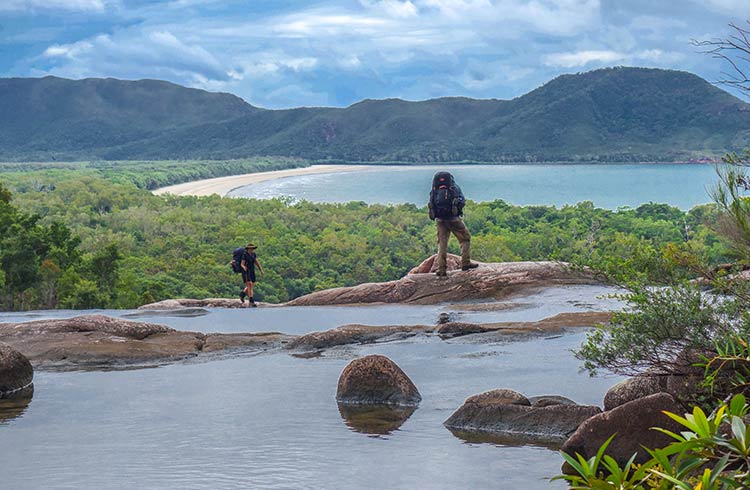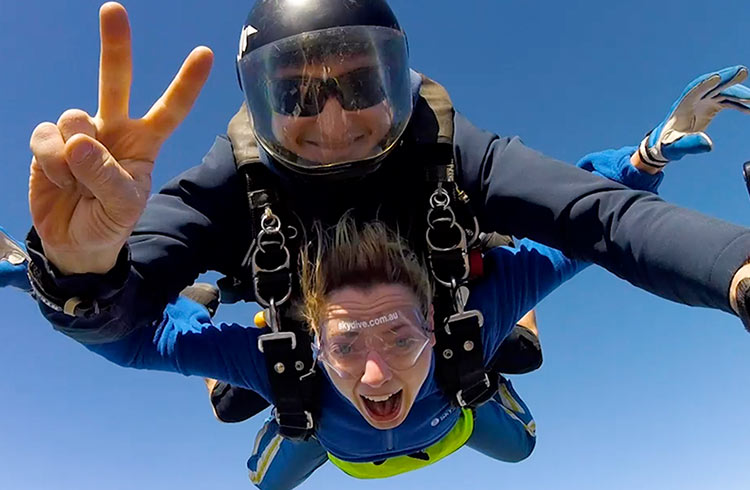Bushwalking in Australia: Essential Hiking Safety Tips
Before you go hiking in Australia's wilderness, find out how to plan and pack for a safe trip, and what to do if you're in danger.
 Photo © GettyImages/lovleah
Photo © GettyImages/lovleah
Here are a few tips to hike safely so you don't become that person who ends up being rescued and featured on the nightly news.
Australia has incredible hiking trails for travelers of all experience levels. Many travelers who visit Australia, regardless of experience level, don't realize how easy it is to get lost or caught out due to weather changes. That half-day hike you decided to do can blow out into a night in the wilderness where you become exposed to the elements – or at worst, a search and rescue mission.
Most hikers experience Australia's bushwalks with little to no trouble, but it pays to be prepared.
- Know your limits
- Tell someone where you're going
- Personal Locator Beacons (EPIRBS)
- Plan your bushwalk
- Essentials to pack for your hike
- Hiking safely in Aussie alpine regions
- What to do if you get lost
Know Your Limits
Many people attempt to walk hiking trails with very little experience or fitness or in some cases, too overconfident in their current experience level. Throw in a weather change and things can deteriorate.
Stick to trails that suit your experience level and if you aren't fit and experienced enough to attempt an advanced trail, don't push yourself to do it.
Tell someone where you are going
This is the golden rule of hiking. Tell someone where you are going and when you expect to return. This applies to solo and group hikers.
Tell anyone you like: the manager of the hostel or hotel you are staying at, the local police, people at the information center or national parks visitors center. Of course, don't forget to tell them when you expect to return - how embarrassing for a search party to be sent out to find you when you've already returned safely and are enjoying a quiet beer at the pub. You will then be owing a few people some beer for the trouble, and potentially a financial penalty.
With multi-day treks such as the Larapinta Trail in the Northern Territory and the Overland Track in Tasmania, there are several initiatives put in place to ensure the safety and enjoyment of hikers.
On the Overland Track, you are required to let someone know (preferably Tasmanian Police) before you set off. There are also log books that you need to sign in and out of at the beginning and end of the track and each time you visit a hut on the track. This assists park staff if someone or a group goes missing or is overdue to arrive at the next location.
Before you set out on the Larapinta Trail, hikers must submit a trek plan with Northern Territory Parks and while on the trail, enter your details into the log books which are located at the beginning of each trailhead (section). Like the Overland Track, this assists park rangers and authorities with a last known location.
Personal locator beacons
In a lot of wilderness spots around Australia, there can be little to no cell phone reception so it's important not to rely on your phone if things go pear-shaped.
Consider using Personal Locator Beacons (PLB) or Emergency Position Indicating Response Beacons (EPIRB) which can be rented or borrowed free of charge from police stations and national parks offices in major bushwalking regions around Australia e.g Blue Mountains National Park and Kosciuszko National Park.
On 31 January 2017, a 65-year-old man set off his PLB while hiking in Kosciuszko National Park (an alpine region) after becoming disorientated and losing his path in the Rolling Grounds near Guthega. He was found the following morning by rescue helicopter. Police highlighted the importance of registering your hike details and taking a PLB as even the most experienced of hikers can need assistance in the mountain area.
PLBs are a last resort only; if you can get cell phone service this is your first choice. The basic purpose of distress radio beacons is to get people rescued within the so-called "golden day" (the first 24 hours following a traumatic event) during which the majority of survivors can usually be found safe.
But, just because you've got a PLB or an EPIRB doesn't mean you can go wandering into the bush without proper gear and preparation.
Plan your bushwalk
Pick walks that are within your fitness capacity and level of experience.
Never walk alone; try to walk in groups of at least four, that way if you do get in trouble you can split into safe groups of two – one to get help (if you can't call for it) and one to stay in one place.
Make sure your clothing and footwear are up to the task; flip-flops, sandals, and wedge heels are not suitable footwear. Think runners or proper walking boots.
Take extra clothing to be prepared for a sudden change in weather. Also, don't be a hero - turn back if the weather starts closing in or if things are starting to feel out of control.
Essentials to pack for your hike
- Waterproof over gear and warm, dry spare clothing
- A box of matches stored in a water-tight container or fire starter
- Enough food for your trip plus emergency rations
- PLB or EPIRB
- A whistle
- A compass and a map, and be sure you know how to use them
- A first aid kit including a space blanket, water purifying tabs
- Water - at least a half gallon, more if you can carry it
With food and water - be safe rather than sorry, don't consume it all too fast. Conserve and ration it in case things do go wrong. Try to only drink the water you carry, water is not always available and untreated creek, bore water or rainwater isn't always safe - despite what Bear Grylls might suggest!
Hiking safely in Aussie alpine regions
Yes, it does get cold in Australia, even in summer. The alpine areas in New South Wales, Victoria and Tasmania can drop to chilly temperatures overnight, patches of snow can be seen around and the weather can turn at a moment's notice. That track you thought you saw in front of you can disappear; leaving you relying on the paper map and a compass or having to bunker down.
Unless you are a highly experienced winter snow hiker or camper, it's best to avoid it.
Overnight camping and alpine walks require even more planning and gear. Here's a list of items, all to be carried on your back in a pack. Remember these are the bare essentials:
- Sleeping bag
- Sleeping mat
- Tent or swag
- Mess kit
- Rubbish bag (if you take it in, bring it out)
- Sun protection gear and beanie or balaclava for protection from the cold
- Waterproof jacket and pants
- Underwear, good walking socks and gloves
- Thermal clothing
- Polar fleece or jacket
- Matches / fire-starters (be mindful of fire safety ratings and signs on the day, you may not be allowed to light a fire at all)
- Toilet paper, plastic bag and toilet trowel - need we say why?
- First aid kit
- Whistle
- Maps and compass
- EPIRB, cell phone, powerbank
- Headtorch.
This list is just the gear, you'll also need enough food and water for at least two days.
What to do if you get lost
Now if the worst happens and you do get into trouble, here's the drill:
- Stay where you are and stay together as a group
- Make your location as visible as possible (don't light a fire though - think about it!)
- Relax and conserve your energy
- Don't panic and don't split up.
The Australian wilderness can be a harsh place and the risks can be high if you are not prepared. Respect her, follow the rules and you'll be fine.
Related articles
Simple and flexible travel insurance
You can buy at home or while traveling, and claim online from anywhere in the world. With 150+ adventure activities covered and 24/7 emergency assistance.
Get a quote

1 Comment
Do not use the comment section as a fun game to joke around and write meaningless & stupid messages.